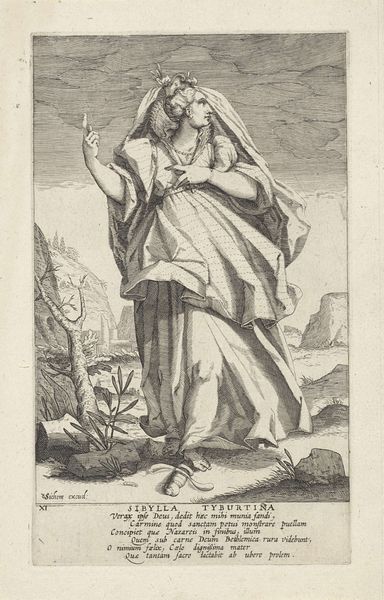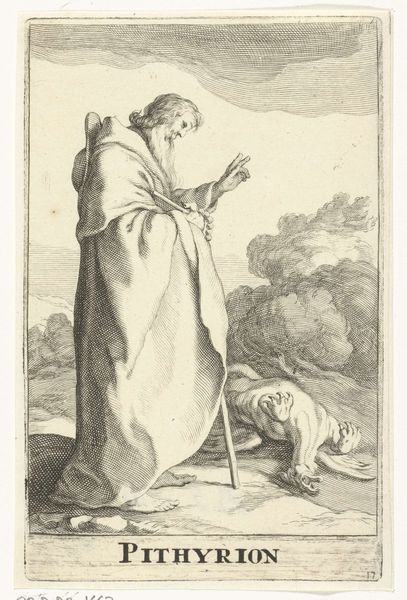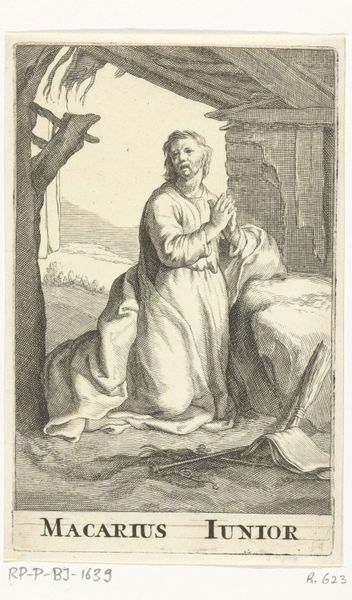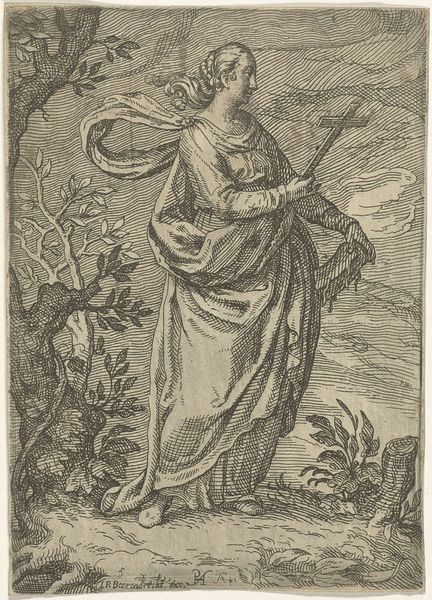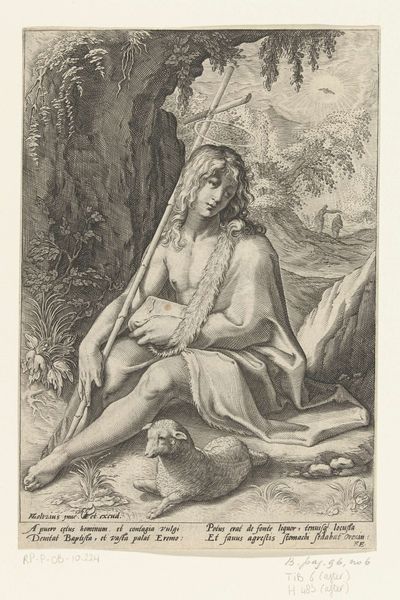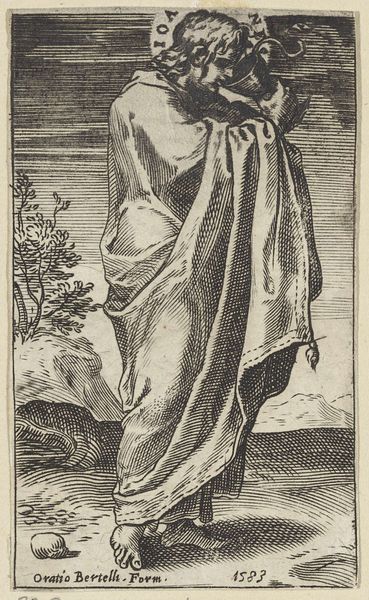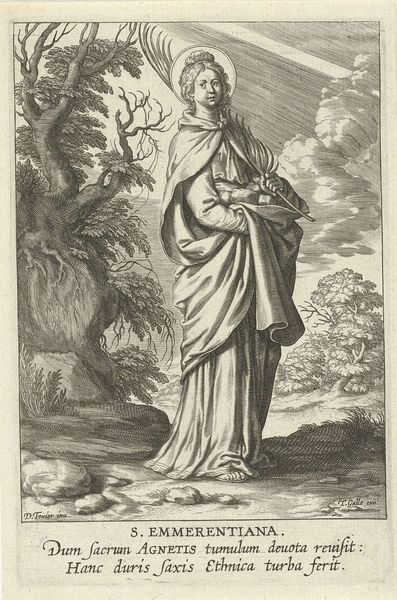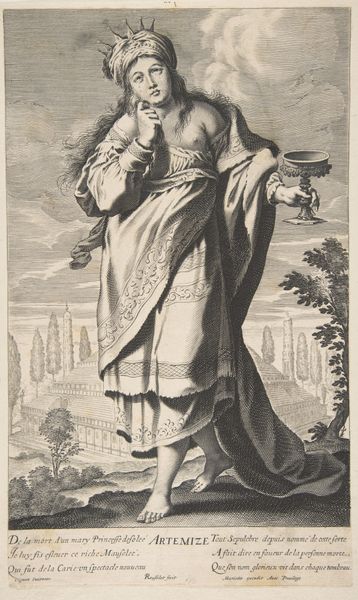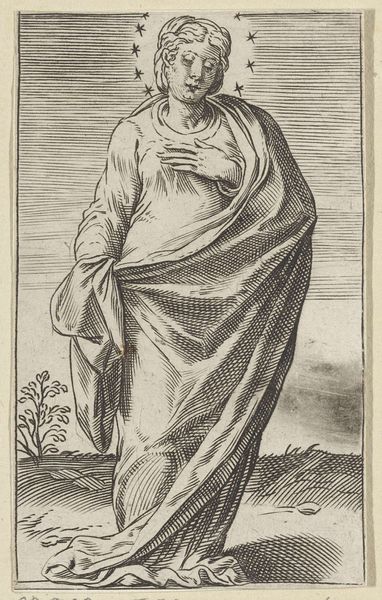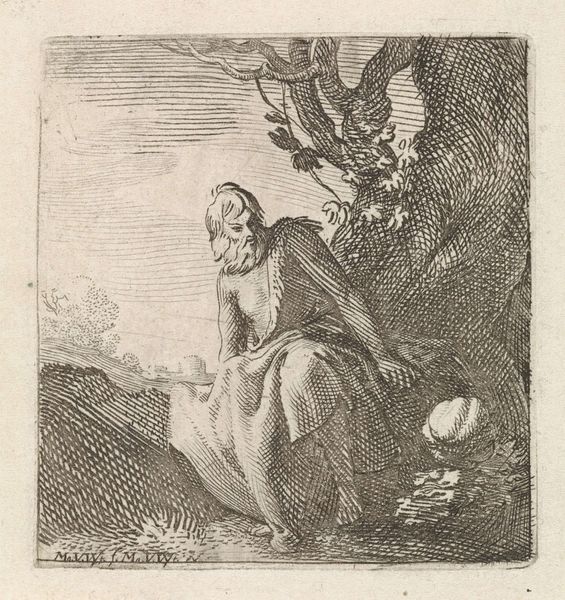
print, engraving
#
baroque
# print
#
landscape
#
figuration
#
history-painting
#
engraving
Dimensions: height 116 mm, width 92 mm
Copyright: Rijks Museum: Open Domain
Wenceslaus Hollar created this print of Johannes de Evangelist using etching, a printmaking technique with a long and fascinating history. The process begins with a metal plate, traditionally copper or zinc. Hollar would have coated this with a waxy, acid-resistant substance, then scratched an image into the coating with a needle, exposing the metal beneath. The plate is then submerged in acid, which bites into the exposed lines, creating grooves. The longer the plate sits in the acid, the deeper the lines become, affecting how much ink they hold later on. Once Hollar was satisfied, he would have removed the acid-resistant coating and applied ink to the plate, ensuring it filled all the etched lines. The surface would then be wiped clean, and the plate pressed onto a sheet of paper. The pressure forces the paper into the inked grooves, transferring the image. Each print requires this laborious process. Etchings like this offer insight into the skilled labor and material processes behind what might seem like a simple image, inviting us to appreciate the artistry inherent in what might otherwise be considered a purely commercial medium.
Comments
No comments
Be the first to comment and join the conversation on the ultimate creative platform.

